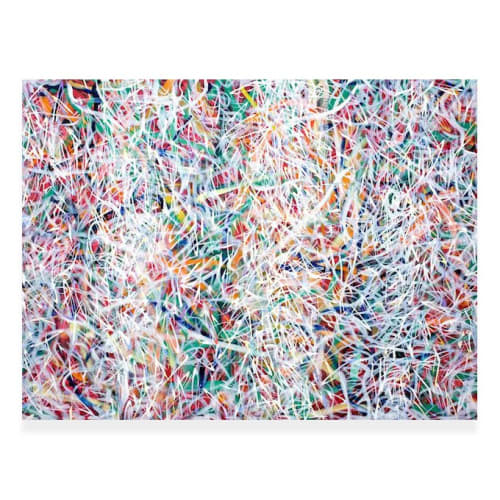Doug Argue's paintings are often made with layers of radiant brushwork and scrims of crisp stencilled letters that envelop the entire canvas to suggest the passage of time, light, motion, and how the past informs the present. In technique, his is a dichotomy of precision and painterly gesture. In content, his paintings are cerebral with interweaving narratives and layers of meaning. Argue expresses the flux of life, suggesting the passage of time, and how the past informs the present.
The atomized letters, "particulate matter" as Argue calls them, are culled from various texts including writers such as Petrarch, Melville and Rimbaud. They work harmoniously with other visual elements to create the possibility for unlimited patterns and meaning. Argue's use of letters are usually not meant to be read, rather they often serve a spatial or rhythmic function, like visual musical notes, the way they float, stretch, skew, or dance en masse in swathes across the plane.
This interest in literature began early in his career: a well-known 90's monumental painting with thousands of caged chickens was prompted in part by a short story of Franz Kafka in which a dog contemplates where we get our food. It is again on view and the centerpiece at the Weisman Art Museum in Minneapolis.
Unlike much of the process-driven abstract contemporary art, Argue's work is rooted in ideas and allegories; with every mark Argue is crafting his story. In the end, Argue's arresting compositions unbind recognizable images and literature to offer a new charged visual language, one that advances a dazzling view of a universe in flux charged with energy and coloratura. His opus is written with a paintbrush.
Argue comments, "there are many different histories in the world, and we often see things in the current moment, yet have no idea what lies beneath. One language is always turning into another, one generation is always rising and another falling, there is no still moment. I am trying to express this flux-this constant shifting of one thing over another, like a veil over the moment itself."

